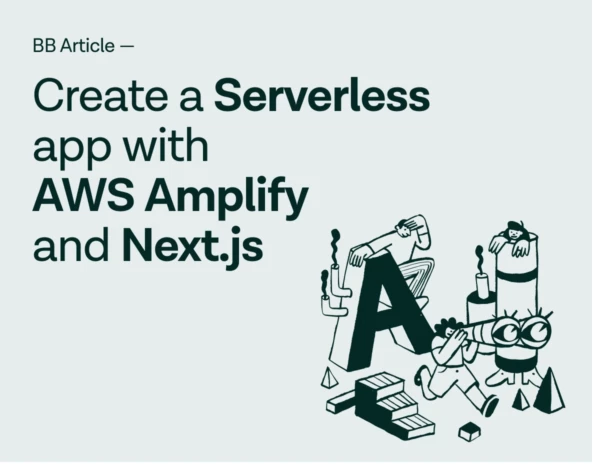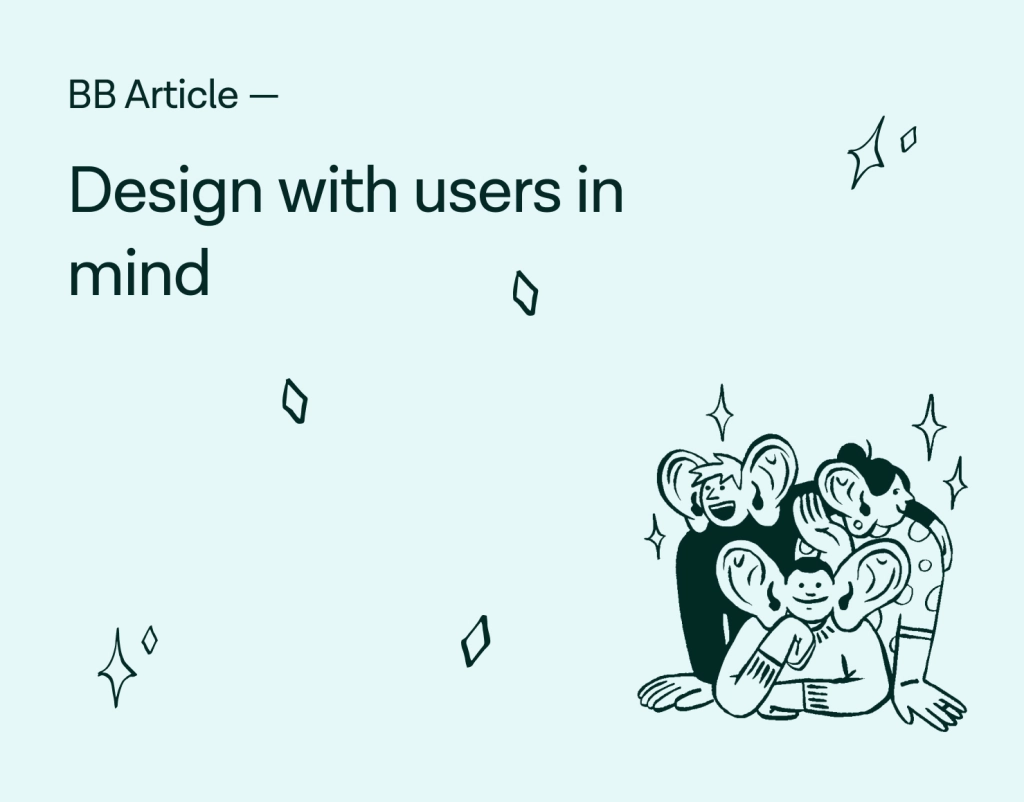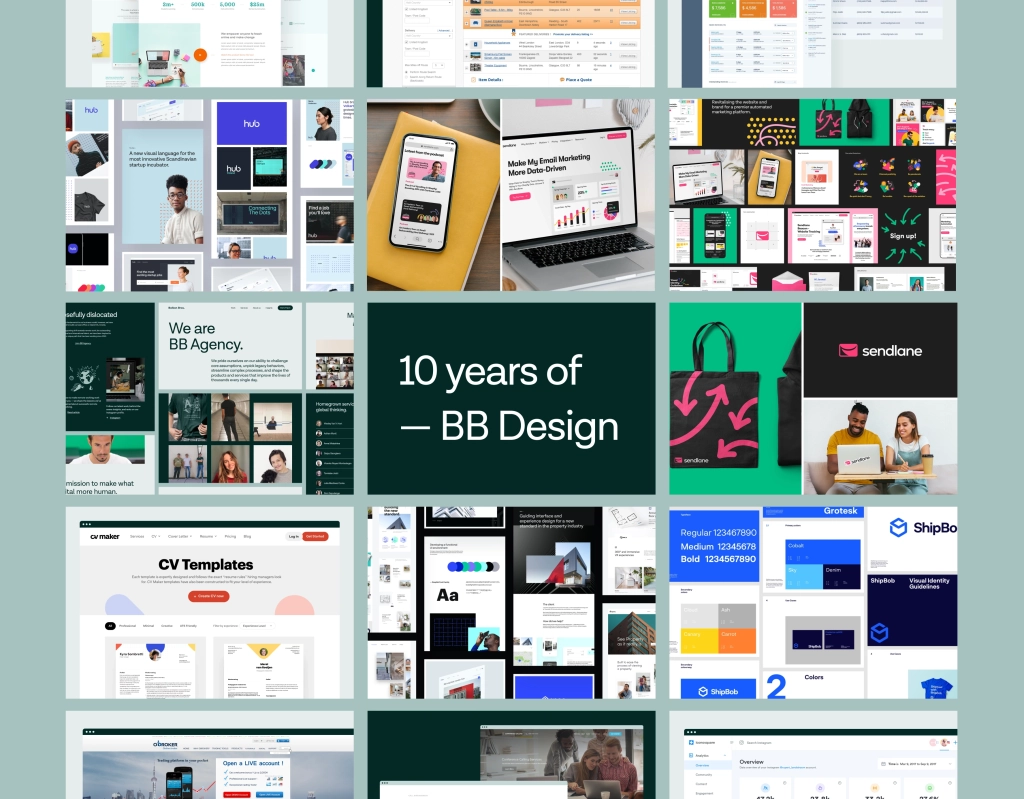The Importance of Building Strong Relationships with Clients for Long-Term Success
As a digital agency collaborating with multiple international clients from different markets, sizes and culture, one of the most critical aspects that we may encounter is a limited understanding that our client may have about their own customers.
Indeed, a lack of a deep relationship between our clients and their customer base, which leads to a poor understanding of their needs, expectations, and concerns, is a deficiency that ultimately has often a significant impact on our design process, and which cannot go unaddressed for the long-term success of any project.
In this article we will explain why is important to get to know your own customers and what consequences a lack of clear understanding of their “profile”, with their requirements, and possible issues can lead; Furthermore, we will see some methods that can be used to gather user information and how to analyze and process such data.
Notorious examples
Even among the well-established and most “user-friendly” brands, there are some well known examples about how a lack of understanding of user needs and limited interaction with the target users can lead to major failures.
Apple Newton
The Apple Newton project was started by Apple in 1987 and the first devices were available in ‘93, it was surely a pioneering product ahead of its time, and even though there were some issues and limitation in terms of technical capabilities (especially regarding the pioneering but not really performing handwriting feature criticized also by The Simpson) and price affordability, what probably did put a definitive cross over the project was a mismatch between the user expectations and the real capability of the products so, ultimately, a poor understanding of the target users and their needs (both spontaneous or induced by a pounding marketing campaign).
The rise and fall of Google Glass
Google Glass is another textbook example to emphasize the significance of building strong relationships with clients for long-term success. It was surely a revolutionary product with advanced technology and a unique design, but faced challenges that stemmed from a lack of understanding of user needs and expectations, especially in their social sphere.
Google started selling a prototype of Google Glass to qualified “Glass Explorers” in the US on Apr 2013, but despite how innovative, technologically advanced and potentially game changing the product was, it failed to achieve widespread adoption primarily due to a gray area of the UX space which led to a misalignment with user needs and a lack of clear use cases.
Certainly, Google had invested in research and from a usability perspective, it was undeniably an exceptional gadget. But the new features and interaction methods implemented in the device did raise fear in the users of losing their privacy, and generated distrust and aversion among the “second-hand users” of the device who were impacted indirectly by the device actions in a real context.
So, the device, despite its innovative features, struggled to resonate with consumers and finally died because during the project was not given enough importance to the user’s standpoint, and in particular to their relationship to the ‘Other’ in their environment.
Amazon Fire Phone
Amazon developed and released the Fire Phone in 2014 with the goal of delivering a distinctive user experience and seamless integration with Amazon’s services. Despite its potential, the Fire Phone did not attain notable success and ultimately ended in failure.
The failure of the Amazon Fire Phone serves as another example of the consequences of a lack of understanding of user needs and the target market.
Despite aiming to provide a unique user experience and seamless integration with Amazon’s services, the Fire Phone did not achieve significant success primarily due to the lack of compelling features that strongly resonate with consumers. Indeed, while the product had innovative features such as dynamic perspective (3D-like effects) and Firefly (object recognition and purchasing tool), these were not in line with the customers needs and expectations, and eventually buyers opted for some other products from other well-established brands that already had a strong user base and brand loyalty.
How to get to know your customers
If these are the potential risks of underestimating the importance of getting known as better as possible your users, there are several methods and tools that can be used to acquire a deep awareness of your customer base and their expectations and motivations.
All of these tools are consistently applied in our projects during the UX research phase and serve as the foundation to ensure our clients the development of a successful and user-centered product/service. The point is to base decisions on data-driven methods and clear user research, rather than on questionable assumptions about what should or should not be considered a good design from the user’s perspective.
Surveys
Surveys are among the fastest and most efficient methods for this purpose, they involve the systematic collection of feedback through structured questionnaires, designed to gather insights into people’s preferences, satisfaction levels, and needs regarding a company’s products or services or to identify trends and uncover areas for improvement.
By asking specific questions, the team can gain valuable information about what users like or dislike, what improvements they desire, and how their expectations align with the company’s offerings, enabling to make informed decisions about product/service development and improvement.
Interviews
Interviews are more time consuming respect surveys; however, they allow to dive much deeper and to gain in-depth insights into users’ experiences, preferences, and feedback through one-on-one conversations with individual users.
Interviews allow to delve deeply into the thoughts, emotions, and motivations of the users. By engaging in direct dialogue, the research team can gather rich qualitative data about the target audience perceptions, pain points, and unmet needs.
Interviews provide a platform for the target audience to express their opinions, share their experiences, and provide detailed feedback, which can be invaluable for product refinement, service enhancements, and overall customer satisfaction.
Social media listening
Social media listening involves actively monitoring and analyzing conversations, mentions, and trends across various social media platforms to gain insights into customer sentiment, preferences, and feedback related to a brand, product, or service. This approach goes beyond tracking mentions to understand broader discussions, identify trends, and effectively engage with the audience.
It provides valuable insights for understanding customer behavior, sentiment, and preferences in the digital space; indeed, If in the previous methods participants could potentially answer in a biased and misleading way due to feeling ‘expected to answer,’ on social media they may be more sincere and less likely to provide condescending answers, enabling the team to gather a new pice of information and adapt its strategies based on a more complete understanding of customer perspectives and needs.
In certain circumstances, data from social media can be automatically analyzed through automated sentiment analysis, which employs natural language processing (NLP) and machine learning to identify and extract the sentiment or attitude of text in social media posts, comments, and mentions related to a brand, product, or service. This technology can quickly gauge the overall sentiment of online conversations by processing large volumes of social media data that would be impossible for a person to read.
Data analytics
Data Analytics involves using advanced tools and methods to analyze large sets of customer data from various sources such as purchase history, website interactions, and demographic information. By utilizing analytics platforms like Google Analytics, Adobe Analytics, and Mixpanel, the team can gain valuable insights into user behavior, audience demographics, and website performance metrics. Additionally, tools like Hotjar provide heatmaps, session recordings, and user feedback capabilities to understand how users interact with a website.
In the field of product analytics, platforms such as Amplitude, Pendo, and Heap help businesses understand user behavior, track product usage, and improve user experiences. These tools offer insights into user engagement, retention, and conversion, allowing to enhance the performance and user experience of the digital products.
By applying statistical and computational techniques the team can identify patterns, trends, and correlations within the data, gaining insights into customer behavior, preferences, and their interactions with a company’s products or website. This analysis enables the identification of distinct customer segments and facilitates the prediction of future consumer behavior. It also empowers to customize marketing efforts to meet the specific needs and preferences of different customer groups, and enhancing the overall customer experience.
How to use this data
Now, After gathering all this data, how can it be analyzed and distilled to make informed decisions and develop a concrete strategy?
One of the most effective ways to elaborate and visualize at glance all these users’ information in a structured way, is to use user persona (or archetypes) to create a concise profile of the users groups with the most useful information, followed by a customer journey map which is a contextualization of such data within a specific project scope.
User Persona
All the information acquired through the aforementioned tools can be used to create a fictional characters called user persona, this character should encapsulates the typical behaviors, goals, needs, and pain points of each customer segments.
Personas have a human face, a name, and biographical information to portray the user as a real person. This is intended to enable the team to empathize with them and have a realistic figure in mind, rather than an undefined concept of “user”.
Take for example Rayan Lee, an IT manager user persona built for the marketing website redesign of eOne solutions, a company which offers an integrated service to connect disparate systems, such as ERPs, CRMs, and help desks, and seamlessly integrate data in one location without any need to code.
Beside the biographical, psychometric information, and the quote, that as mentioned, are intended to create the idea of a realistic figure and to empathize more easily with such figure; the profile also outlines in a concise format:
- Goals and needs: What does Rayan need to accomplish during his daily work? What are his desires and requirements for smoothly carrying out his routine tasks? What is most important to him? What does he need to achieve every day?
- Pain points and challenges: What are the main obstacles and issues that Rayan may encounter during his workday? What are the primary challenges he should be concerned about?
- How we can help (“Touch-points”): Considering Rayan’s goals and pain points, what can we do to facilitate his job? On what should the product/service focus in order to address Rayan’s challenges and streamline his work?
By developing user personas, the design team can gain a deeper understanding of the diverse user base and use this information to foster a more user-tailored design process. In this case, for example, Rayan Lee’s user persona (along with other user personas created for eOne Solutions) was used to elaborate a value proposition canvas for the website redesign (VPC). The VPC offered a way to match each customer profile with how the products/services can alleviate customer pains and create gains, ensuring that the redesign addressed the specific jobs each user is trying to accomplish on the website, alleviated their pains, and provided the desired gains.
However, a disadvantage of the user personas is that they use a single face to represent many real users, which can result in not representing all user groups; Furthermore, the value of a personas often lies in the stakeholders you need to involve (and educate) within the team/organization, there may be some occasions when stakeholders do not trust user personas and may be reluctant to apply such tool.
In that case, archetypes can be a solution to convince them that it is worth investing effort and research to understand users’ needs and pain points.
Personas and archetypes are extremely similar, differing only in how the underlying insights are presented. The difference is in whether the user types are presented as a specific humans character. With personas, you need to invent a (plausible) name, bio, photo, and other personal characteristics, whereas with archetypes, you can ignore such details and refer to the user solely by an abstract label that represents the defining behavioral or attitudinal characteristics of that user type. The choice of one type or another will depend on the type of audiences we have to work with and how skeptical stakeholders can be toward the tool.
Customer journey mapping
Customer journey mapping (CJM) is a powerful tool for visualizing and understanding the customer’s experience with a brand/product, from the initial point of contact through the entire process of engagement and long-term relationship. It incorporates data from various sources, included the aforementioned tools, to provide a comprehensive understanding of the customer experience. This involves creating a comprensive representation of the customer’s interactions, emotions, and touch-points across various stages of their journey with a brand, product or service.
By mapping out the users’ path, the team can gain valuable insights from the customer’s needs, pain points, and expectations at each stage of their interaction with the brand, identifying opportunities for improvement, optimize touch-points, and deliver a more seamless and personalized experience for our clients’ customers. Ultimately, customer journey mapping aligns internal processes and strategies with the customer’s perspective, leading to the development of more targeted and effective strategies that enhance customer satisfaction and long-term loyalty.
Take as example the Customer Journey maps created for our client Kinetik, a SaaS company for NEMT (non emergency medical transportation) services. The end users of such services are often elderly patients who may have limited tech capabilities and some sensory impairments; all limitations that hardly have ever experienced by the team members involved into the project and that can limit the capability to fully understand and empathize with the users and so to provide something that is really fit with them and for their needs. For this reason was important to create a journey map to empathize with the perspective of a user with needs and requirements vastly different from those in the design team members.
In the CJM, you can outline a plausible scenario for each user persona (in this case, Betty, a patient) to help you understand the context and their final expectations about the product or service. This includes helping you put yourself in their shoes, mapping out all user interactions with the product (divided into phases, actions, and steps), and capturing the user’s thoughts and feelings during each interaction. Additionally, you can list potential challenges and opportunities.



